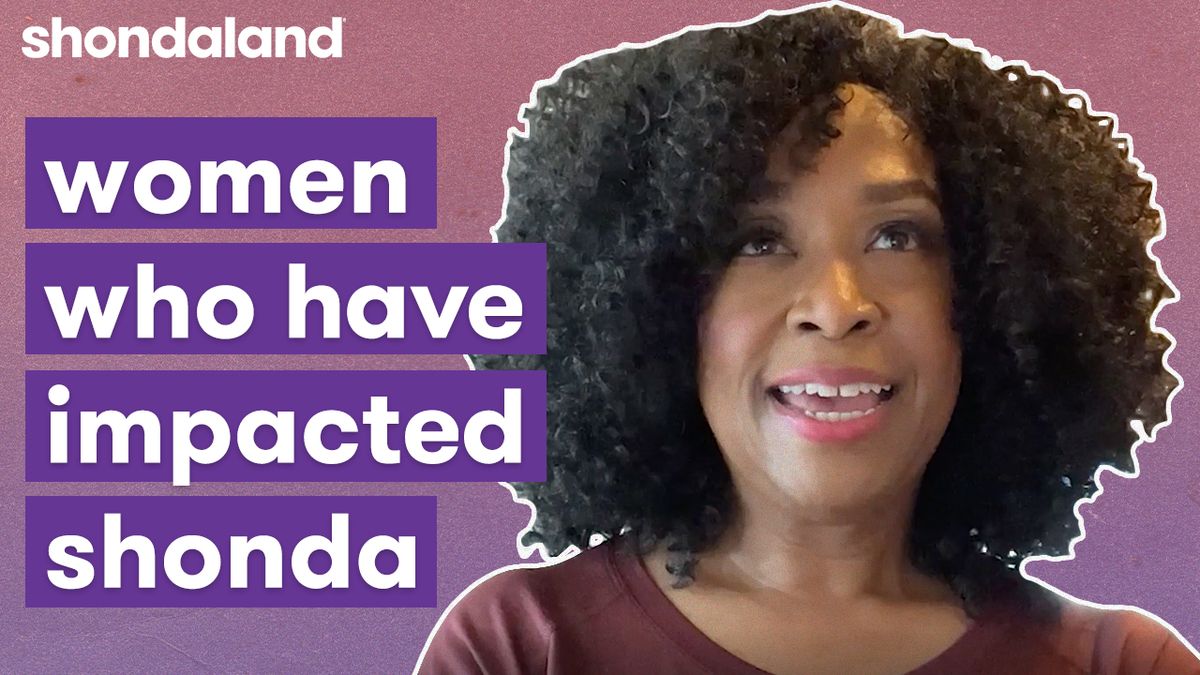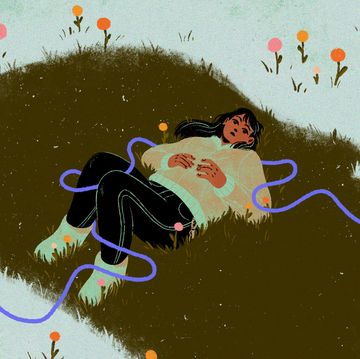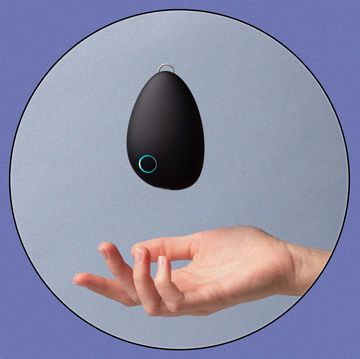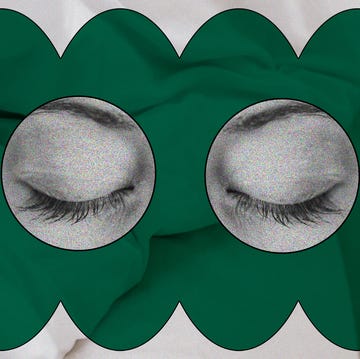A woman’s mental and physical well-being requires tests, treatments, and preventions that men just don't have to deal with. But this isn't always discussed. From fibroids to diets to natal care, women's health is extremely nuanced. With this in mind, Shondaland wanted to take a distinct look into the world of women's health, all in the hopes of fostering well-rounded wellness.
In 2018, not long after the release of my third book, the memoir Sick — about my many years of being undiagnosed, then misdiagnosed, and finally diagnosed with late-stage Lyme disease — I began to receive some odd DMs on Instagram. They always came after I’d posted a full-body photo or selfie, and usually began with an apology for intruding. They all ended with the question: “...but have you ever been diagnosed with Ehlers-Danlos?” I had never heard of it.
I had lived with chronic Lyme disease for more than a decade. But by the time Sick was published in late spring 2018, I thought I had most of my symptoms pretty well managed. If not exactly healthy, I was up and running. Then, on the book tour, I kept ending up in ER rooms. Several times I collapsed, struggling to breathe, my heart rate alarmingly elevated. I tried to soldier on; at one point, I even did a live public radio interview on my cell phone while lying on a stretcher in Manhattan.
But there was no denying it: I was suddenly sicker than ever. I couldn’t sleep, became sensitive to light, had trouble swallowing. I felt like I was running a marathon just sitting on my bed. And this time around, all the treatments I had discovered to heal my lyme disease — everything from the established (antibiotics) to the experimental (bee venom therapy) — did nothing. My new symptoms seemed at least somewhat related to mold exposure: The ceiling had fallen in the back of my pre-war Harlem apartment, which led to water damage and decay. But no doctor could figure out why I couldn’t recover even after I moved out. It occurred to me, and apparently to a handful of watchful lurkers online, that there could be something else afoot that I didn’t know about.
I started googling Ehlers-Danlos, and learned that EDS is not a single condition, but a group of disorders in which collagen — the basic building block of tissues throughout the body: skin, joints, blood vessels, and other organs — is abnormally produced, causing symptoms ranging from overly flexible joints to broken blood vessels and fragile skin that doesn’t heal easily.
At first, I could not see myself in the EDS images I scrolled through online, these nearly comical drawings of people with hyperelastic skin and severe double-jointedness. But then, I started to wonder: Hadn’t I always been double-jointed — bendy enough, in fact, to have become a yoga teacher in my twenties with little effort? And hadn’t my skin always been stretchy and soft, a source of fascination to facialists and makeup artists? Until then, both of these characteristics had seemed like assets (elasticity, after all, is the quality of youth that skin supposedly loses as we age.) Finally, one day I asked a friend to do a little comparison: Together, we pinched the skin on our forearms and examined the bend of our elbows and knees. Suddenly I could see it: I was like Gumby next to her. No question, she was not built like me. I booked an appointment with a rheumatologist who specializes in EDS.
After an hour and a half of gingerly examining my every limb and analyzing as much of my skin as he could, this first doctor announced: “It seems very likely that you have EDS.”
But I’d been through years of treatments and tests, I protested; I’d seen what felt like a hundred doctors. I had written a book on chronic illness. “How could EDS have been missed this whole time?”
He said what every doctor since has said since: “It usually is.”
Just as I came to this discovery, it seemed the rest of the world had too. “EDS seems to be in fashion these days,” a friend recently joked, “You’re on trend!”
First came the always-vocal The Good Place actor and chronic illness/body positivity advocate Jameela Jamil, who officially revealed in February 2019 that she had been diagnosed with EDS as a child. Then, on Season 11 of Ru-Paul’s Drag Race, contestant Yvie Oddly was injured while performing and had to use crutches. She spoke in-depth about her pain and shared that she, too, has a form of EDS.
Last October, enigmatic pop star Sia sent out a nighttime tweet that read like one of my own cries for help, capped with an almost forced positivity: “Hey, I'm suffering with chronic pain, a neurological disease, ehlers danlos and I just wanted to say to those of you suffering from pain, whether physical or emotional, I love you, keep going. Life is fucking hard. Pain is demoralizing, and you're not alone.”
One month later, Lena Dunham tweeted about a paparazzi shot in which she was spotted standing outside her home in a long nightgown, leaning on a cane. "This is what life is like when I'm struggling most with chronic illness. An Ehlers-Danlos syndrome flare means that I need support from more than just my friends... so thank you, sweet cane!" Dunham continued: "For years, I resisted doing anything that would make my physical situation easier, insisting that a cane would 'make things weird.’ But it's so much less weird to actually be able to participate than to stay in bed all day. And yes, you'd better believe I'm wearing my nightgown. I was walking four feet to the car to go to the doctor and I wanted to be full cozy.”
Why now? Ehlers Danlos, after all, is hardly new: It was first recognized as a condition in 1901. Some have called it the most undiagnosed rare disease — suggesting that it might not be that rare at all. According to the EDS Society, somewhere between 1 in 2,500 to 1 in 5,000 people have been diagnosed with it, but some researchers believe the condition is far more common. Perhaps because EDS been labeled rare since it was first recognized, science has been slow to understand it.
So far, thirteen subtypes of EDS have been identified, including mine, Hypermobile EDS, or hEDS. In addition to its classic characteristics — hyper-mobile joints, stretchy skin, and tissue fragility—each of these subgroups EDS entails different symptoms, including chronic musculoskeletal pain, a tendency for internal tissues to rupture, scoliosis, a range of eye symptoms (since eyes consist of 80 percent collagen), irregular heartbeat, and gum disease.
And, as in my case, EDS conditions often co-exist and overlap with other ones. Which means no two patients are likely to experience EDS in the exact same way.
What makes a disease you’ve never heard of become suddenly, strangely visible? There’s no data to suggest that EDS is suddenly more prevalent — it’s just become more apparent. That’s partly a product of the social media era: Now, those who have it, or suspect they might, can connect and share stories. This connectedness enabled my Instagram followers to spot a disease none of my doctors ever had.
Additionally, attitudes around chronic pain have shifted. Public figures and regular folks alike (especially women) are increasingly open about their health struggles. I often think of previous generations who suffered alone, believing they were the only ones who had EDS. And that’s people who were lucky enough to get a diagnosis—how many others were made to believe their symptoms were all “in their head”?
Now, the culture of “putting it all out there,” is putting the visibility of chronic illness on the ascent.
Believe me, that’s not always a sad thing. Finding this new community put me on the path to a new set of solutions.
It took two years from the time I got those first Instagram messages to find a doctor of pain medicine who specializes in EDS to conclusively diagnose and treat me. The process started with a geneticist, who ran an EDS panel (a blood test). For me, the smoking gun was the nine-point Beighton scoring system, a nine-point scale that measures joint mobility: the pinky-finger knuckles, the base of the thumbs, elbows, knees, and spine. My family history was also taken into account; it’s possible that most of my father’s side shares my hypermobility, and maybe my diagnosis, though they have never known.
While life expectancy may be compromised for those with Vascular Ehlers-Danlos, which affects the blood vessels and is considered the most severe form of the disorder, most EDS patients live a normal life span. And though there is no cure for EDS, there is treatment. Taking pain medication like low-dose naltrexone and gabapentin, and doing pilates and special physical therapy sequences have made me feel completely different in my body, lessening a host of other symptoms: sleep disturbances, fatigue, gastrointestinal problems, anxiety, and depression. For me, knowing what I have, and how to handle it, has been life-changing.
On social media, the zebra emoji has become the official mascot of EDS and HSD (a related group of conditions of joint hypermobility). EDS-ers in general call each other “zebras,” from the old medical saying, “When you hear hoofbeats, look for horses, not zebras,” in other words, don’t overlook the obvious answer in favor of some exotic diagnosis. The “rare” and yet under-diagnosed EDS/HSD is the exception: don’t assume the hoofbeats you hear aren’t zebras. Social media shows me that zebras are in fact all around us.
In August, the Ehlers-Danlos Society gave Jamil an award for patient advocacy. In her acceptance speech, the actress acknowledged that for a long time, she’d been ambivalent about revealing her diagnosis — never quite keeping it a secret, but not speaking about it at length either. “I think I was afraid of being discriminated against, discouraged by how little information there is about it publicly,” she said. “It’s terrifying how many doctors still haven’t heard of it, and it’s been around for a very long time.”
In recent months, I’ve been sharing more about EDS on social media, and not without my own ambivalence. After all these years, I felt burned out on sickness, miserable to have yet another illness to add to my list. Plus, even with concrete evidence of my EDS, I find myself shy around fellow zebras, almost like an imposter. It’s so new to me. But then, I remind myself, EDS is new to practically everyone, even medical professionals.
Last November, Jamil showed up at the American Music Awards in Los Angeles in a sparkly, zebra-stripe Pamela Roland dress. It felt like a wink.
Inspired, I ordered some zebra tights the other day. Last week I even found myself writing to a young stranger who was following me on Instagram: “I hope you will excuse the intrusion, but I was noticing your photos and posts about pain, and, well, I could not help but wonder have you ever been diagnosed with Ehlers-Danlos?” She wrote back thanking me, with a response that mirrored my old ones: She had never heard of it.
Porochista Khakpour is the critically-acclaimed author of the forthcoming essay collection Brown Album (Vintage, May 2020) and the memoir Sick, as well the novels The Last Illusion and Sons & Other Flammable Objects. She has received many awards for her writing, including an NEA . She currently lives in New York City. Find her on Twitter @Pkhakpour.
Get Shondaland directly in your inbox: SUBSCRIBE TODAY













